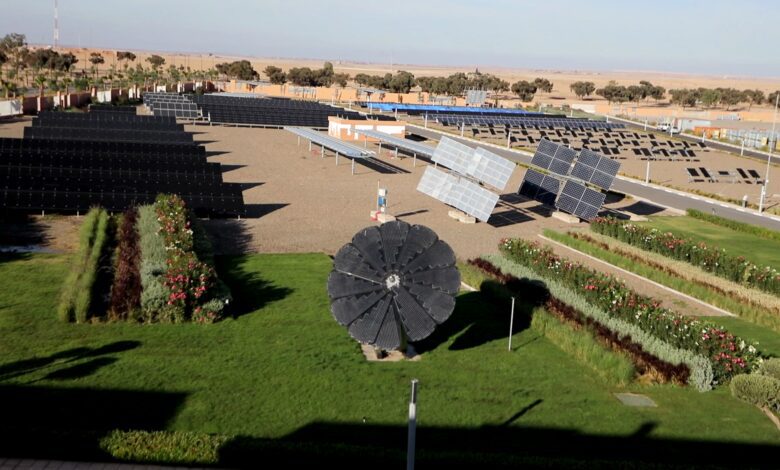Gautam Adani showcases world’s largest green energy park project, clearly visible from space
The scale of the project is exemplified by its sheer size and its potential to make a substantial impact on India's green capacity.

Adani Group is making a significant contribution to India’s renewable energy landscape by establishing the world’s largest green energy park in the Rann of Kutch desert area in Gujarat. Spanning a vast 726 sq km, this monumental project is set to generate an impressive 30 GW of power, catering to the energy needs of over 20 million homes. In a post on X, Gautam Adani, the group chairman, expressed pride in playing a crucial role in India’s strides towards renewable energy.
The challenging Rann desert setting adds to the project’s uniqueness, making it visible even from space. The ambitious venture underscores the Adani Group’s commitment to sustainable energy and aligns with India’s renewable energy goals. The scale of the project is exemplified by its sheer size and its potential to make a substantial impact on India’s green capacity.
Gautam Adani highlighted another significant initiative just 150 km away in Mundra, the group’s karmabhoomi. In Mundra, they are establishing one of the world’s most extensive and integrated renewable energy manufacturing ecosystems for solar and wind. This development marks a milestone in India’s journey towards sustainable and reinforces the group’s commitment to initiatives like the Solar Alliance and Atmanirbhar Bharat.
The group chairman shared images showcasing the progress of the large-scale project, offering a glimpse into the ongoing efforts to bring this ambitious vision to life. The visual representation of the project adds a layer of transparency and excitement, allowing stakeholders and the public to witness the tangible progress being made.
This Adani Group project is not only a commendable venture in itself but is also expected to contribute significantly to India’s green energy capacity. It aligns with the country’s climate action pledges made at COP26 in 2021. India’s commitment to the five-part “Panchamrit” pledge at COP26 reflects its dedication to addressing climate change and transitioning to a more sustainable energy future.
The five commitments include reaching 500 GW of non-fossil electricity capacity, generating half of all energy requirements from renewables, and reducing emissions by 1 billion tonnes by 2030. These ambitious targets showcase India’s determination to make substantial strides in mitigating climate change. Additionally, India aims to reduce the emissions intensity of its GDP by 45%, demonstrating a comprehensive approach to sustainable development.
The final commitment in the “Panchamrit” pledge is perhaps the most ambitious—India aims to achieve net-zero emissions by 2070. This long-term goal reinforces the country’s commitment to becoming a carbon-neutral nation, emphasizing the importance of forward-thinking and sustained efforts in combating climate change.
You might also be intersted in – Adani achieves milestone with India’s largest 765 KV inter-regional transmission line



